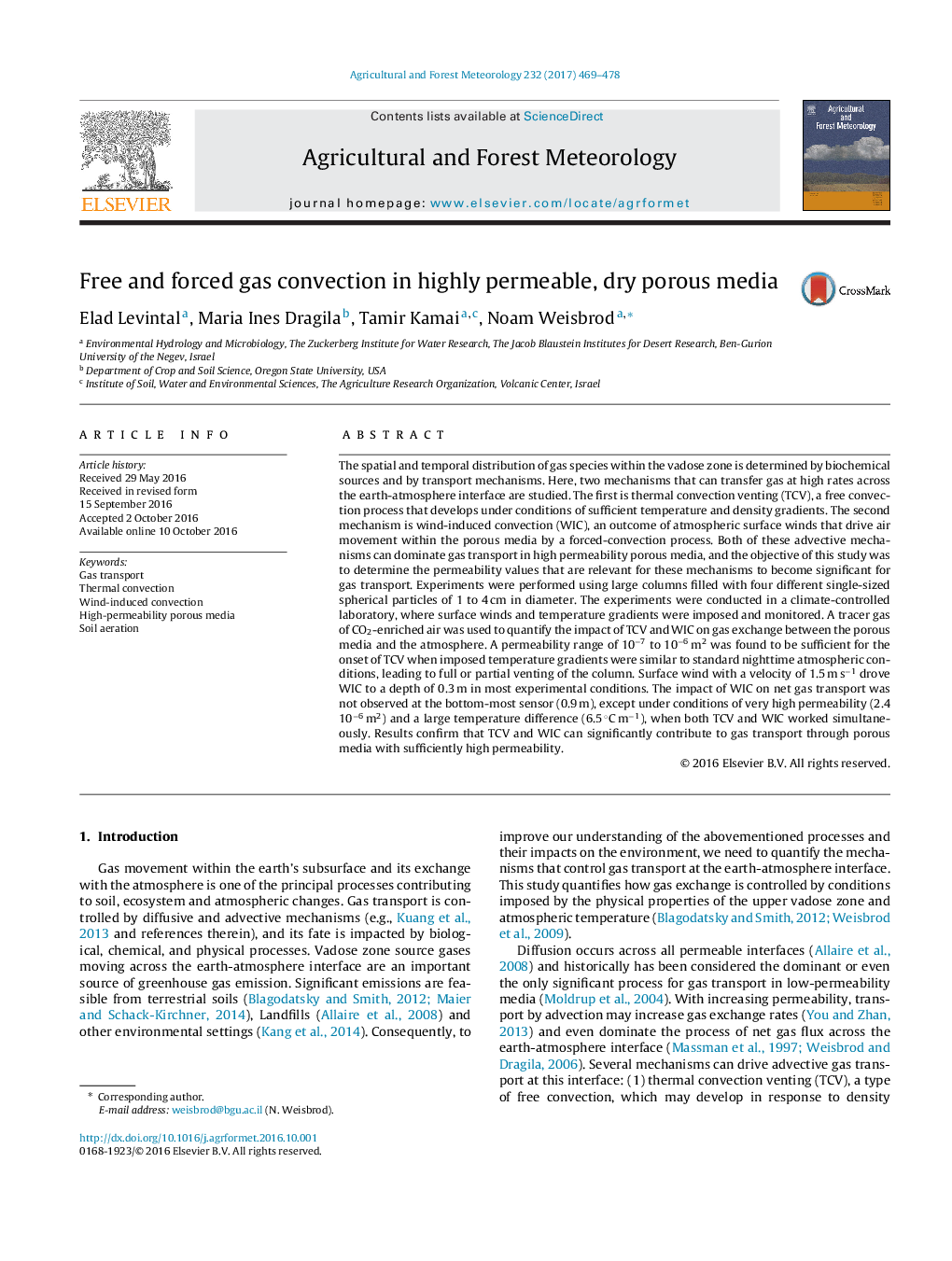| کد مقاله | کد نشریه | سال انتشار | مقاله انگلیسی | نسخه تمام متن |
|---|---|---|---|---|
| 6458128 | 1420865 | 2017 | 10 صفحه PDF | دانلود رایگان |
عنوان انگلیسی مقاله ISI
Free and forced gas convection in highly permeable, dry porous media
ترجمه فارسی عنوان
جابجایی آزاد و مجاز گاز در رسانه های متخلخل خشک و پر از آب
دانلود مقاله + سفارش ترجمه
دانلود مقاله ISI انگلیسی
رایگان برای ایرانیان
کلمات کلیدی
حمل و نقل گاز، جوش حرارتی، گرمازدگی ناشی از باد، رسانه های متخلخل بالا هوادهی خاک،
موضوعات مرتبط
مهندسی و علوم پایه
علوم زمین و سیارات
علم هواشناسی
چکیده انگلیسی
The spatial and temporal distribution of gas species within the vadose zone is determined by biochemical sources and by transport mechanisms. Here, two mechanisms that can transfer gas at high rates across the earth-atmosphere interface are studied. The first is thermal convection venting (TCV), a free convection process that develops under conditions of sufficient temperature and density gradients. The second mechanism is wind-induced convection (WIC), an outcome of atmospheric surface winds that drive air movement within the porous media by a forced-convection process. Both of these advective mechanisms can dominate gas transport in high permeability porous media, and the objective of this study was to determine the permeability values that are relevant for these mechanisms to become significant for gas transport. Experiments were performed using large columns filled with four different single-sized spherical particles of 1 to 4 cm in diameter. The experiments were conducted in a climate-controlled laboratory, where surface winds and temperature gradients were imposed and monitored. A tracer gas of CO2-enriched air was used to quantify the impact of TCV and WIC on gas exchange between the porous media and the atmosphere. A permeability range of 10â7 to 10â6 m2 was found to be sufficient for the onset of TCV when imposed temperature gradients were similar to standard nighttime atmospheric conditions, leading to full or partial venting of the column. Surface wind with a velocity of 1.5 m sâ1 drove WIC to a depth of 0.3 m in most experimental conditions. The impact of WIC on net gas transport was not observed at the bottom-most sensor (0.9 m), except under conditions of very high permeability (2.4 10â6 m2) and a large temperature difference (6.5 °C mâ1), when both TCV and WIC worked simultaneously. Results confirm that TCV and WIC can significantly contribute to gas transport through porous media with sufficiently high permeability.
ناشر
Database: Elsevier - ScienceDirect (ساینس دایرکت)
Journal: Agricultural and Forest Meteorology - Volume 232, 15 January 2017, Pages 469-478
Journal: Agricultural and Forest Meteorology - Volume 232, 15 January 2017, Pages 469-478
نویسندگان
Elad Levintal, Maria Ines Dragila, Tamir Kamai, Noam Weisbrod,
